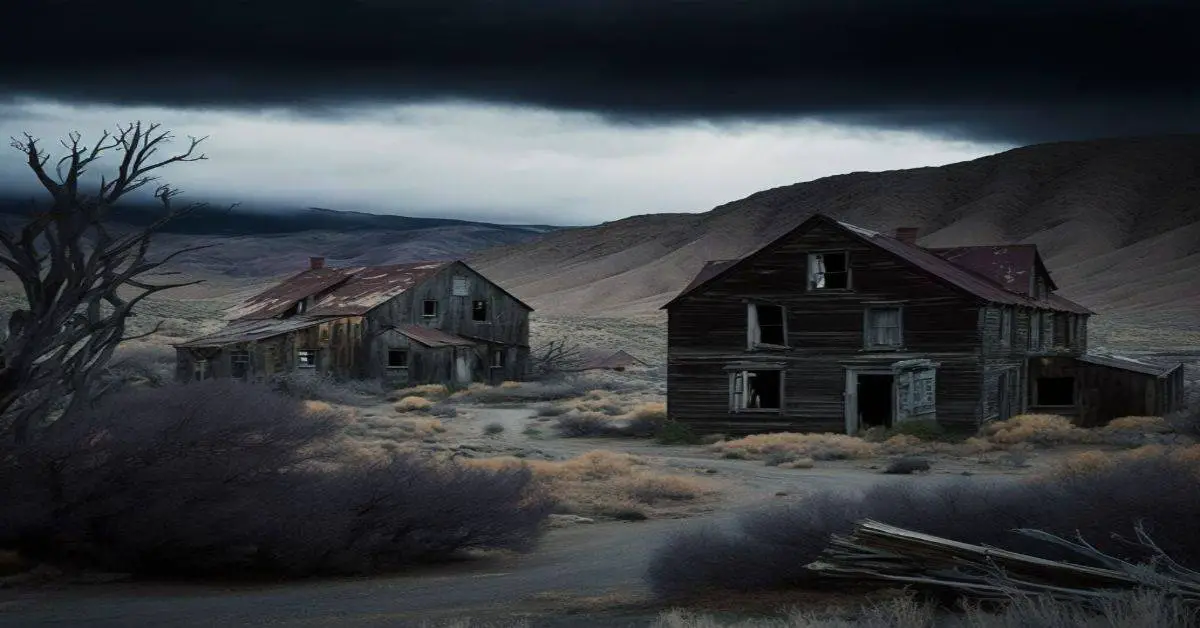Nevada’s Silver Peak is a forgotten gem of the Wild West that dates back to the 1860s. It is the oldest mining town in the state, with a rich history that tells the story of a community that once thrived on the spoils of the earth. Nestled in the arid mountains of Nevada, Silver Peak is a testament to the grit and determination of the miners who made their fortunes in the mines that dot the landscape.
Despite being a ghost town today, Silver Peak continues attracting adventurous travelers keen to explore the remnants of this once-thriving community. The town was discovered in 1863 and quickly became a prosperous mining town, with a 100 stamp mill built by the Pittsburgh Silver Peak Gold Mining Company in the early 1900s.
However, as quickly as it rose to prominence, it disappeared by 1917, leaving behind only a few buildings as remnants of its former glory. As we delve into the history of Silver Peak, we will explore the discovery and early mining, the mining boom and growth, and the remains and history of this fascinating town.
Key Takeaways
- Silver Peak is the oldest mining town in Nevada, dating back to 1863.
- The town experienced rapid growth with the establishment of stamp mills, which allowed for efficient ore processing and advanced mining techniques.
- The mining industry led to an influx of prospectors and workers, contributing to growth and expansion, but also brought about lawlessness during the late 1860s.
- Tragedy struck in 1948 when the town burned down, leaving only remnants of its past, but Silver Peak continues to attract adventurous travelers interested in its history.
Discovery and Early Mining
Silver Peak, the oldest mining town in Nevada, was discovered in 1863 and quickly became one of the leading mining areas in the state. The town grew rapidly, establishing a 10 stamp mill in 1865 and a 20 stamp mill in 1867.
However, the 1860s were marked by rampant lawlessness and Silver Peak was not spared from its effects. Despite this, the town flourished and became the leading camp in Nevada in the early 1900s, partly thanks to the impact of the Pittsburgh Silver Peak Gold Mining Company.
The Pittsburgh Silver Peak Gold Mining Company bought a group of properties in 1906 and constructed the Silver Peak railroad. Additionally, the company built a 100 stamp mill at Blair, further solidifying Silver Peak’s position as a significant mining town.
However, the town’s fortunes were not limited to precious metals. In the 1960s, the Foote Mineral Company began extracting lithium under the Clayton Valley floor, further enhancing the town’s economic prospects.
Mining Boom and Growth
The development of mining operations in the mid-1800s led to an influx of prospectors and workers, resulting in significant growth and expansion of the settlement that would later become a ghost town in Nevada.
The mining boom in Silver Peak brought about new and improved mining techniques, allowing for the extraction of more precious metals such as silver, gold, and lead. The construction of stamp mills allowed for the efficient processing of ore, which contributed to the town’s economic growth.
The Pittsburgh Silver Peak Gold Mining Company bought a group of properties in 1906 and constructed the Silver Peak railroad and the 100 stamp mill at Blair, further boosting the economic impact of the town.
The growth of the mining industry in Silver Peak was evident in the town’s population, which fluctuated with different companies that came through. The Foote Mineral Company began extracting lithium from Clayton Valley, which proved to be a valuable resource.
However, the mining industry’s success was short-lived, and the town eventually disappeared by 1917. The remains of a few buildings stand as a reminder of Silver Peak’s mining history and its impact on the settlement’s growth.
Remains and History
One notable aspect of the settlement in question is the limited number of remaining buildings and structures that serve as reminders of its past.
Silver Peak was once a thriving mining town, but as time passed, the town slowly disappeared, leaving behind only a few abandoned buildings.
The town’s history is marked by lawlessness, with mining camp violence and disputes being common occurrences during the late 1860s.
The town’s population has fluctuated over the years, rising and falling with the various mining companies that have come and gone.
Despite its decline, Silver Peak has significantly impacted the region’s economy.
The town’s mining techniques were some of the most advanced in Nevada, with the Pittsburgh Silver Peak Gold Mining Company constructing a 100-stamp mill at Blair to process ore.
Later on, the Foote Mineral Company began extracting Lithium from the floor of Clayton Valley, an activity that continues today.
However, the town’s history is not without tragedy, as it was burned down in 1948, leaving only remnants of its past.
Frequently Asked Questions
What types of minerals were extracted from Silver Peak besides silver and gold?
Besides silver and gold, Lithium was extracted from under the floor of Clayton Valley at Silver Peak. Exploration techniques and environmental impact related to Lithium extraction are important considerations for sustainable mining practices.
How did the town get its name?
Silver Peak’s name is believed to have originated from the silver deposits found in the area. The town’s historical significance lies in being Nevada’s oldest mining area, with notable mining activities during the early 1900s.
What was the population of Silver Peak at its peak?
At its peak, the population of Silver Peak varied depending on the different mining companies that operated in the area. The economic impact of these companies influenced the population growth, which fluctuated throughout the town’s history.
Are there any legends or ghost stories associated with the town?
Local folklore suggests that the ghosts of former miners may haunt some of the remaining buildings in Silver Peak. However, there is no concrete evidence to support these claims.
What other industries besides mining were present in Silver Peak during its heyday?
Besides mining, there were no other major industries present in Silver Peak during its heyday. However, the town’s remnants have the potential to attract tourism, which could have a positive impact on modern-day Nevada’s economy.


